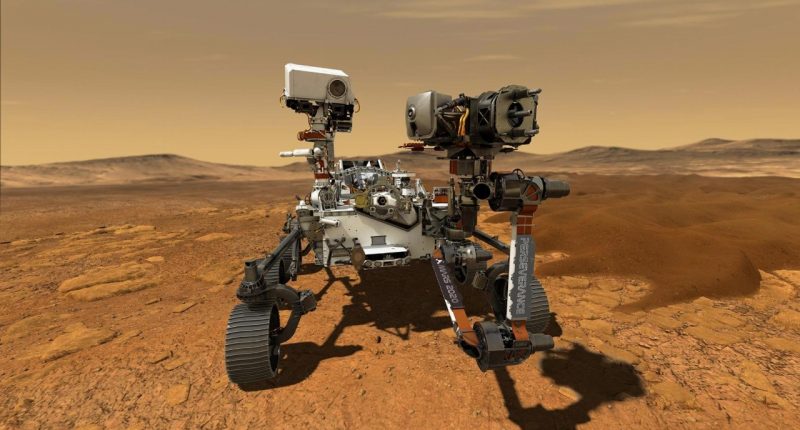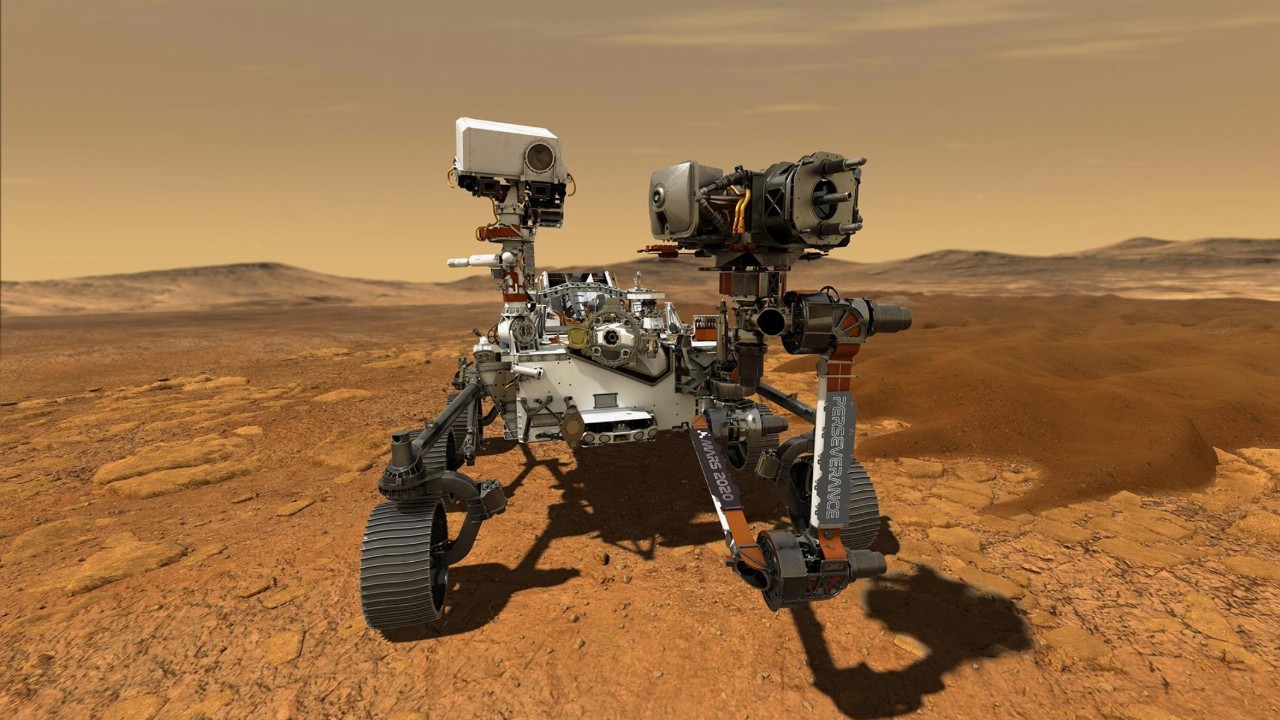- After a 472 million-kilometre journey, NASA’s Perseverance rover has safely landed on the floor of one of Mars’ vast craters
- The US$2.7 billion (roughly A$3.48 billion) mission will search for fossilised signs of microbes that may have existed on Mars around three billion years ago
- Two subsequent missions have been planned over the next decade to collect any samples and return them to NASA
- Perseverance’s payload includes a number of demonstrative projects that could pave the way for eventual human exploration, like a device that converts carbon dioxide to pure oxygen
- It also carries a miniature 1.8-kilogram helicopter, which will be used to test the first powered and controlled flight of an aircraft on another planet
After a 472 million-kilometre journey, NASA’s Perseverance rover has safely landed on the floor of one of Mars’ vast craters.
The one-tonne robotic vehicle travelled for seven months before entering the Red Planet’s atmosphere at 19,000 kilometres per hour — 16 times the speed of sound — in preparation for a descent that’s been dubbed “the seven minutes of terror”.
The self-guided descent and landing through a complex series of manoeuvres stands as the most elaborate and challenging feat in the history of robotic spaceflight, prompting mission managers at NASA’s Jet Propulsion Laboratory near Los Angeles to burst into applause.
“Touchdown confirmed,” Mohan Swati, the lead guidance and operations specialist announced from the control room. “Perseverance safely on the surface of Mars.”
Moments later, Perseverance beamed back its first black-and-white images from the Martian surface. Since radio waves take 11 minutes to travel from Mars to Earth, Perseverance had already touched down before its arrival was confirmed.
Acting NASA Administrator Steve Jurczyk called it an “amazing accomplishment.”
The landing was the riskiest part of the two-year, US$2.7 billion (roughly A$3.48 billion) mission to search for fossilised signs of microbes that may have existed on Mars around 3 billion years ago, when the fourth planet from the sun was warmer, wetter and potentially hospitable to life.
Two subsequent missions have been planned over the next decade to collect any samples and return them to NASA.
Scientists have described the endeavour as the most ambitious of nearly 20 U.S. missions to Mars, which began with the Mariner spacecraft’s fly-by in 1965.
Perseverance’s payload includes a number of demonstrative projects that could pave the way for eventual human exploration, like a device that converts carbon dioxide in the Martian atmosphere to pure oxygen.
The rover also carries a miniature 1.8-kilogram helicopter, which will be used to test the first powered and controlled flight of an aircraft on another planet.
Last week, separate probes launched by the United Arab Emirates and China reached Martian orbit, adding to NASA’s has three existing Mars satellites and two from the European Space Agency.








